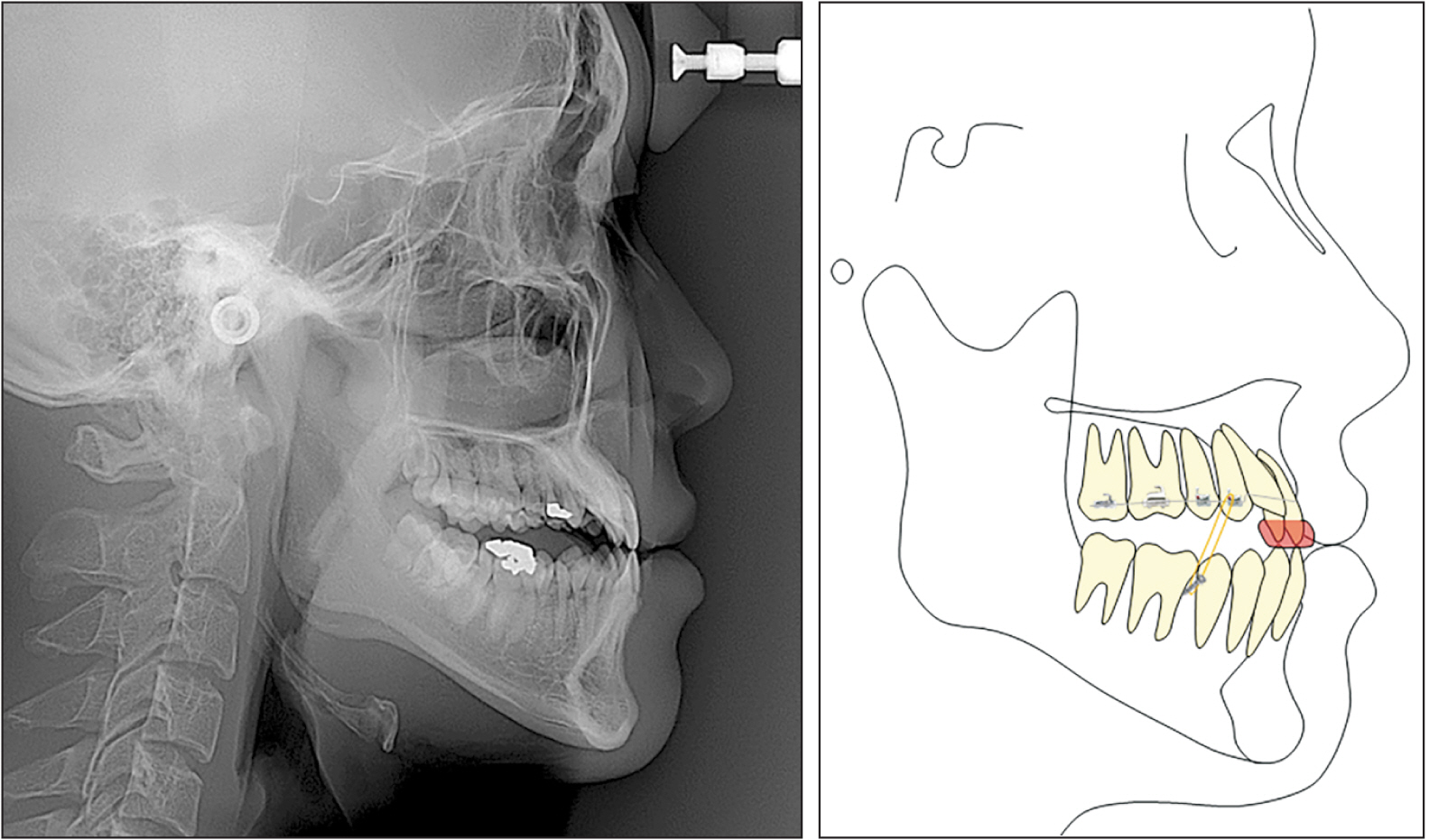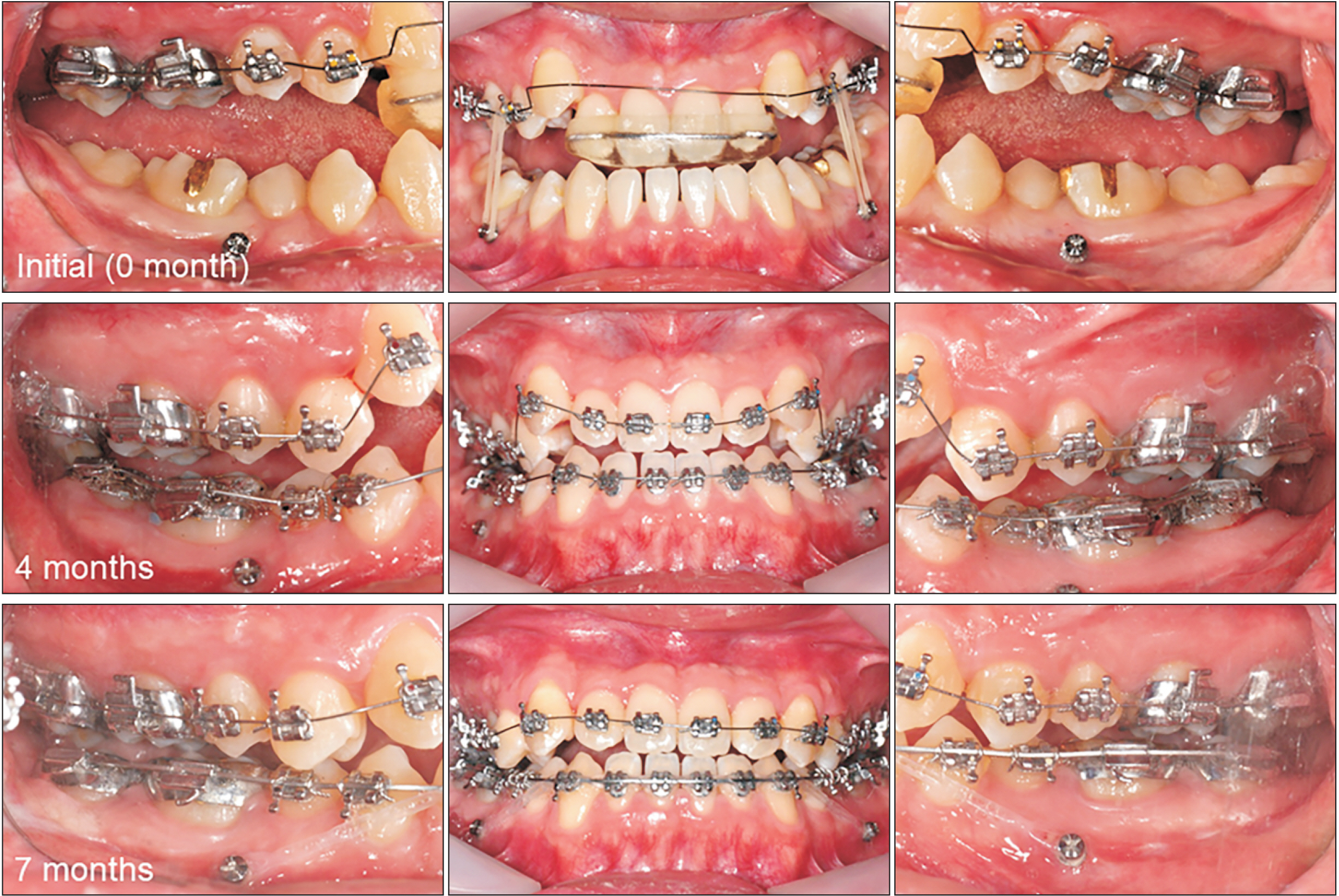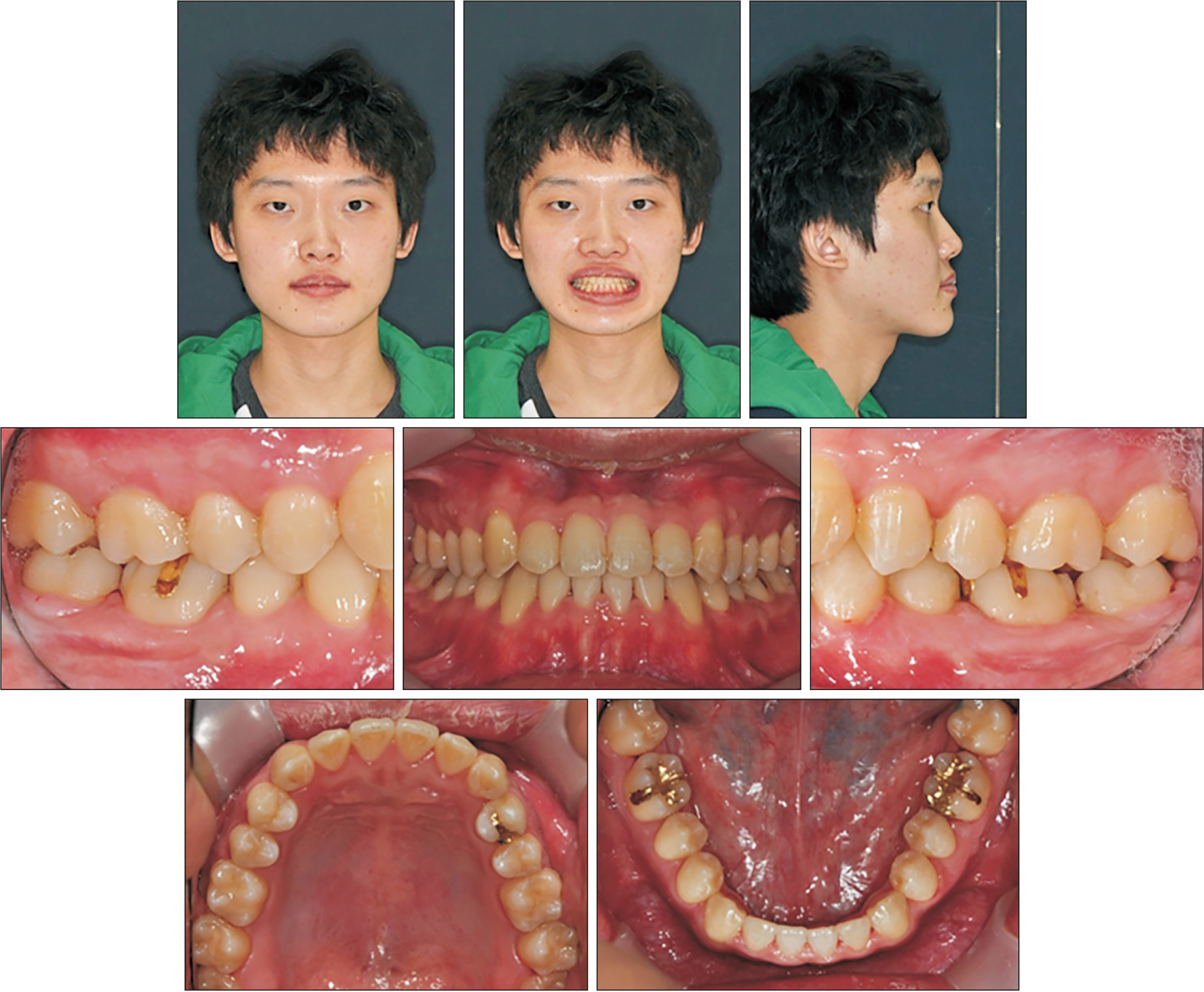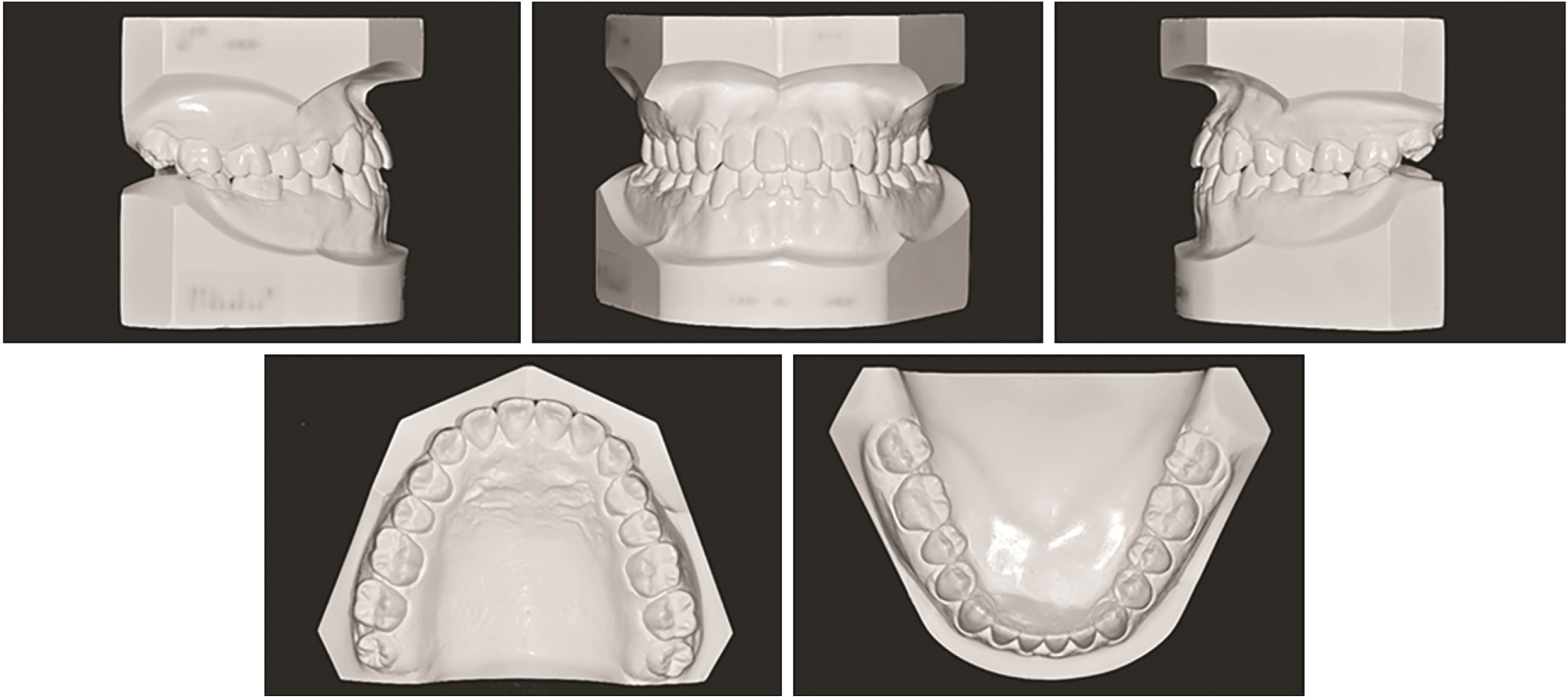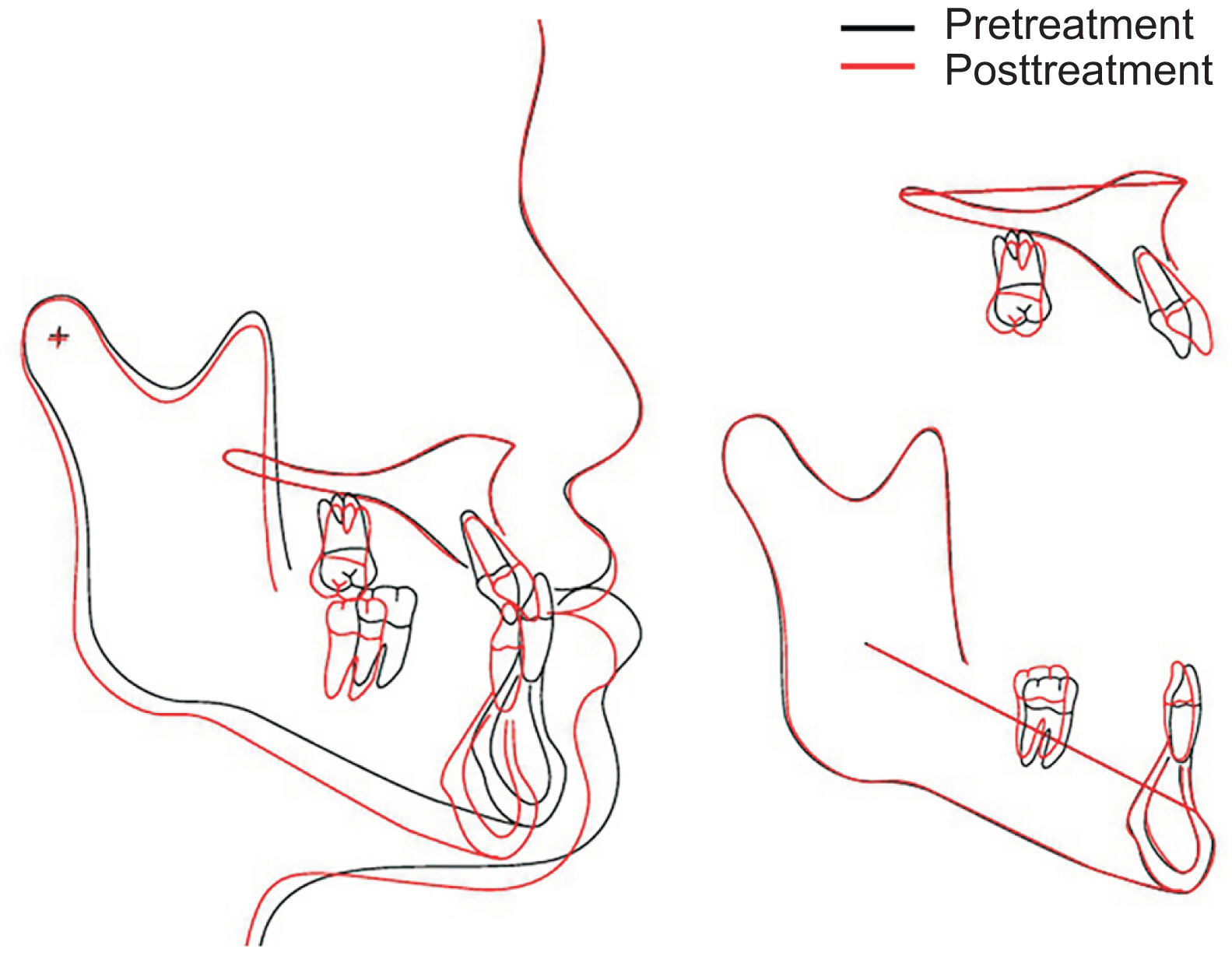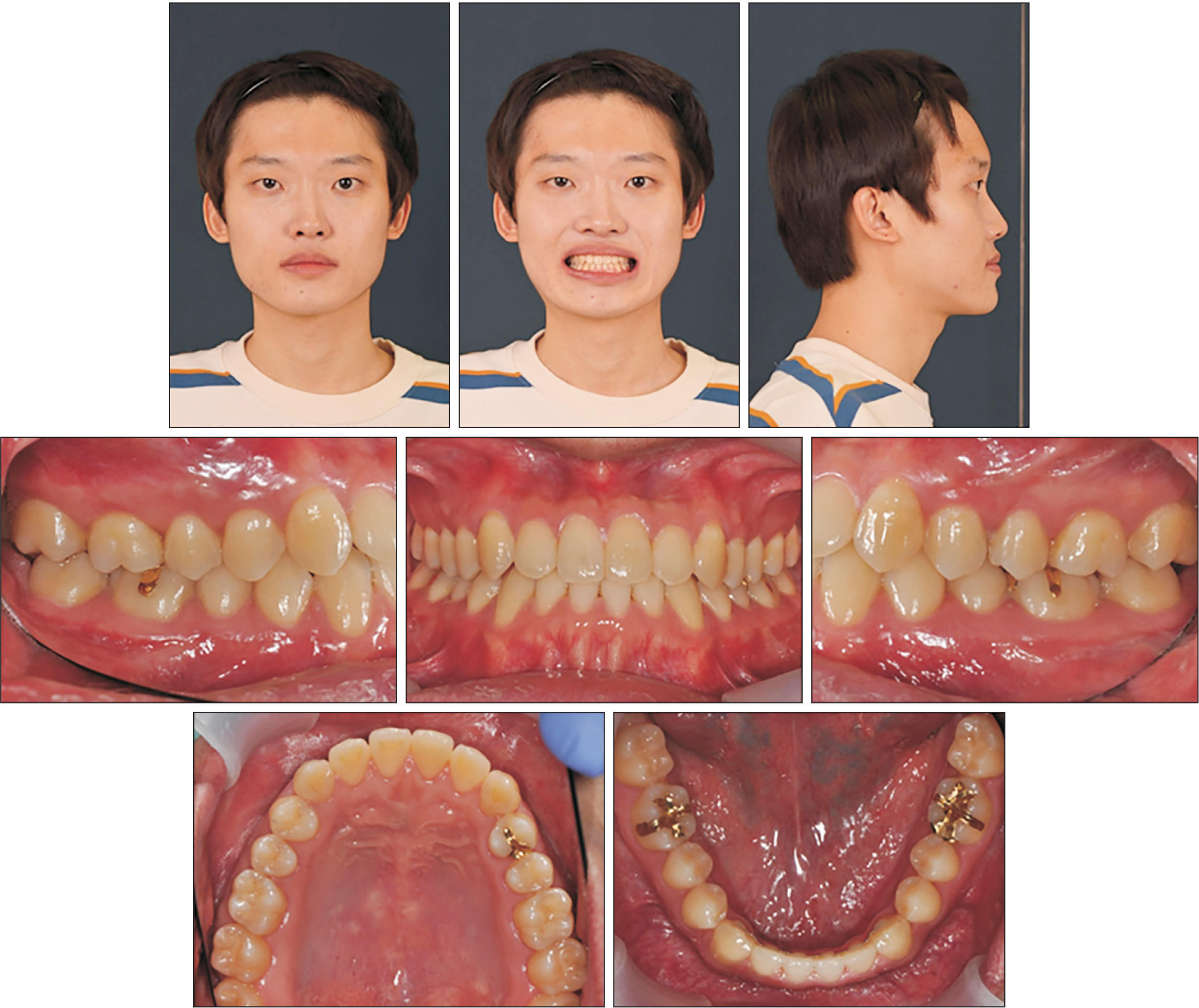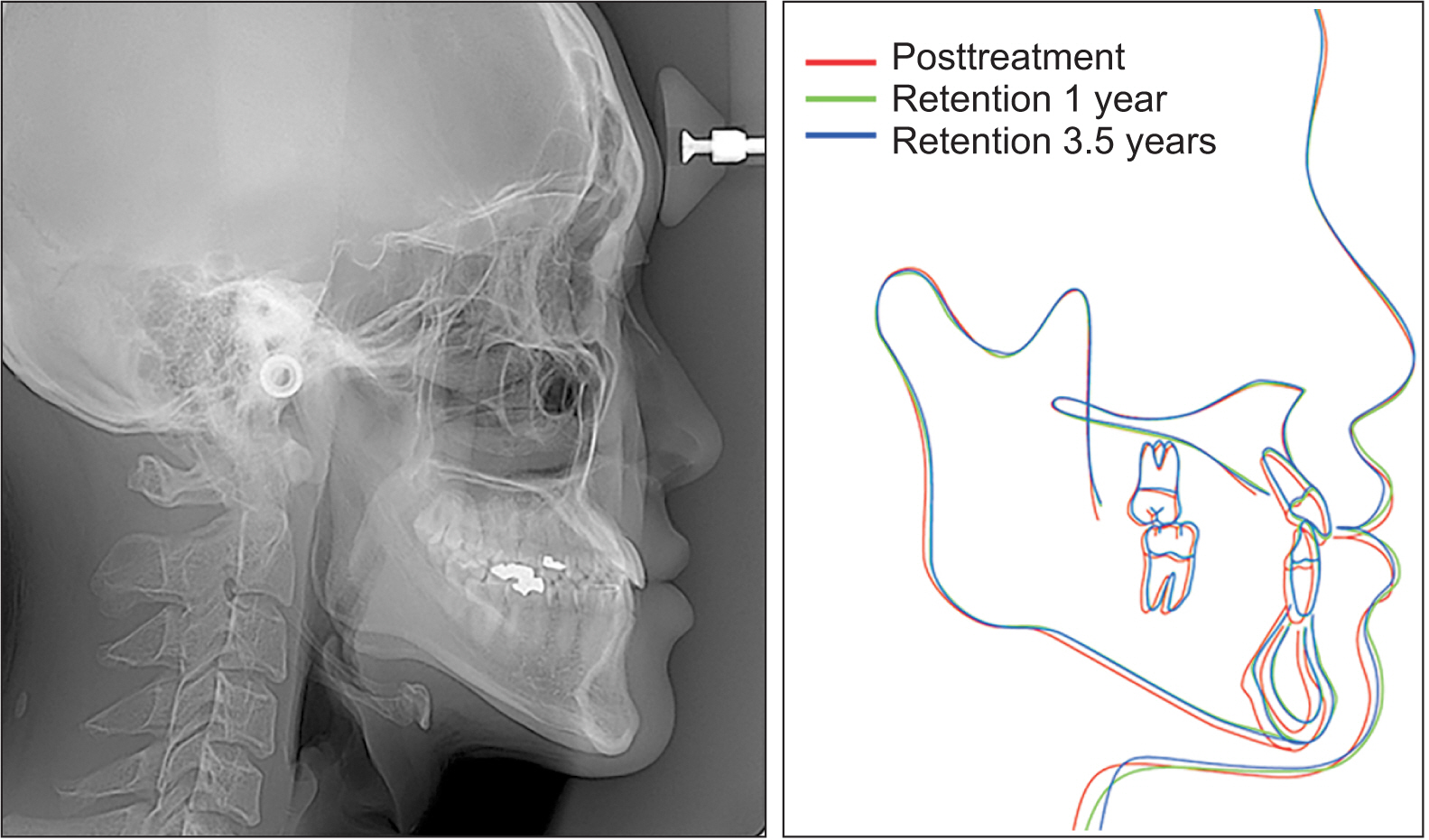Korean J Orthod.
2022 Sep;52(5):362-371. 10.4041/kjod22.023.
Camouflage treatment by backward rotation of the mandible for a severe skeletal Class III malocclusion with aplastic anemia: A case report
- Affiliations
-
- 1Department of Orthodontics, College of Dentistry, Gangneung-Wonju National University, Gangneung, Korea
- KMID: 2533261
- DOI: http://doi.org/10.4041/kjod22.023
Abstract
- Orthognathic surgery is the primary treatment option for severe skeletal discrepancy. However, orthodontic camouflage should be considered as an alternative treatment option, considering the risks of surgery. A 19.5-yearold man presented with a severe prognathic mandible with a Class III molar relationship and an anterior crossbite. Orthognathic surgery could be considered because of his severe skeletal discrepancy and mandibular prognathism. However, the anesthetist for orthognathic surgery did not recommend surgery under general anesthesia because of risk factors associated with the patient’s aplastic anemia, including bleeding and infections. Thus, a camouflage treatment to promote backward rotation of the mandible via orthodontic extrusion of the posterior teeth was planned. An anterior bite plate, intermaxillary elastics, and fixed orthodontic appliances were used to extrude the posterior teeth and to align the dentition. After 17 months of nonsurgical orthodontic treatment, normal occlusion was achieved, and the facial profile was dramatically improved. This case report describes the dentoskeletal and soft-tissue effects of mandibular rotation and its long-term stability.
Figure
Reference
-
1. Ellis E 3rd, McNamara JA Jr. 1984; Components of adult Class III malocclusion. J Oral Maxillofac Surg. 42:295–305. DOI: 10.1016/0278-2391(84)90109-5. PMID: 6585502. PMID: https://www.scopus.com/inward/record.uri?partnerID=HzOxMe3b&scp=0021327420&origin=inward.2. de Alba y Levy JA, Caputo AA, Chaconas SJ. 1979; Effects of orthodontic intermaxillary Class III mechanics on craniofacial structures. Part I- photoerlastic analysis. Angle Orthod. 49:21–8. DOI: 10.1043/0003-3219(1979)049<0021:EOOICI>2.0.CO;2. PMID: 283706.3. de Alba y Levy JA, Chaconas SJ, Caputo AA. 1979; Effects of orthodontic intermaxillary Class III mechanics on craniofacial structures. Part II- computerized cephalometrics. Angle Orthod. 49:29–36. DOI: 10.1043/0003-3219(1979)049<0029:EOOICI>2.0.CO;2. PMID: 283707.4. Kim YH, Han UK. 2001; The versatility and effectiveness of the multiloop edgewise archwire (MEAW) in treatment of various malocclusions. World J Orthod. 2:208–18. PMID: https://www.scopus.com/inward/record.uri?partnerID=HzOxMe3b&scp=0018390587&origin=inward.5. Baik HS. 2007; Limitations in orthopedic and camouflage treatment for Class III malocclusion. Semin Orthod. 13:158–74. DOI: 10.1053/j.sodo.2007.05.004. PMID: https://www.scopus.com/inward/record.uri?partnerID=HzOxMe3b&scp=34548315920&origin=inward.6. Kuroda S, Tanaka E. 2011; Application of temporary anchorage devices for the treatment of adult class III malocclusions. Semin Orthod. 17:91–7. DOI: 10.1053/j.sodo.2010.12.002. PMID: https://www.scopus.com/inward/record.uri?partnerID=HzOxMe3b&scp=79956224517&origin=inward.7. Stellzig-Eisenhauer A, Lux CJ, Schuster G. 2002; Treatment decision in adult patients with Class III malocclusion: orthodontic therapy or orthognathic surgery? Am J Orthod Dentofacial Orthop. 122:27–37. discussion 37–8. DOI: 10.1067/mod.2002.123632. PMID: 12142894. PMID: https://www.scopus.com/inward/record.uri?partnerID=HzOxMe3b&scp=15944400979&origin=inward.8. Woodside DG. 1998; Do functional appliances have an orthopedic effect? Am J Orthod Dentofacial Orthop. 113:11–4. DOI: 10.1016/S0889-5406(98)70270-7. PMID: 9457013. PMID: https://www.scopus.com/inward/record.uri?partnerID=HzOxMe3b&scp=0031608221&origin=inward.9. Hisano M, Ohtsubo K, Chung CJ, Nastion F, Soma K. 2006; Vertical control by combining a monoblock appliance in adult Class III overclosure treatment. Angle Orthod. 76:226–35. DOI: 10.1043/0003-3219(2006)076[0226:VCBCAM]2.0.CO;2. PMID: 16539546.10. Eslami S, Faber J, Fateh A, Sheikholaemmeh F, Grassia V, Jamilian A. 2018; Treatment decision in adult patients with Class III malocclusion: surgery versus orthodontics. Prog Orthod. 19:28. DOI: 10.1186/s40510-018-0218-0. PMID: 30069814. PMCID: PMC6070451. PMID: https://www.scopus.com/inward/record.uri?partnerID=HzOxMe3b&scp=85051087978&origin=inward.11. Nakamura M, Kawanabe N, Kataoka T, Murakami T, Yamashiro T, Kamioka H. 2017; Comparative evaluation of treatment outcomes between temporary anchorage devices and Class III elastics in Class III malocclusions. Am J Orthod Dentofacial Orthop. 151:1116–24. DOI: 10.1016/j.ajodo.2016.10.040. PMID: 28554457. PMID: https://www.scopus.com/inward/record.uri?partnerID=HzOxMe3b&scp=85020123371&origin=inward.12. Bilodeau JE. 1995; Vertical considerations in diagnosis and treatment. A surgical orthodontic case report. Am J Orthod Dentofacial Orthop. 107:91–100. DOI: 10.1016/S0889-5406(95)70160-5. PMID: 7817965. PMID: https://www.scopus.com/inward/record.uri?partnerID=HzOxMe3b&scp=0029195947&origin=inward.13. Gattozzi JG, Nicol BR, Somes GW, Ellinger CW. 1976; Variations in mandibular rest positions with and without dentures in place. J Prosthet Dent. 36:159–63. DOI: 10.1016/0022-3913(76)90137-2. PMID: 1068279. PMID: https://www.scopus.com/inward/record.uri?partnerID=HzOxMe3b&scp=0016991911&origin=inward.14. Koka S. 2007; Vertical dimension of occlusion. Int J Prosthodont. 20:342. DOI: 10.11607/ijp.5146. PMID: 17695854. PMID: https://www.scopus.com/inward/record.uri?partnerID=HzOxMe3b&scp=85019396931&origin=inward.15. Monteith B. 1984; The role of the free-way space in the generation of muscle pain among denture-wearers. J Oral Rehabil. 11:483–98. DOI: 10.1111/j.1365-2842.1984.tb00601.x. PMID: 6239019. PMID: https://www.scopus.com/inward/record.uri?partnerID=HzOxMe3b&scp=0021498686&origin=inward.16. Schuyler C. 1939; Problems associated with opening the bite which would contraindicate it as a common procedure. J Am Dent Assoc. 26:734–40. DOI: 10.14219/jada.archive.1939.0154.17. Tench RW. 1938; Dangers in dental reconstruction involving increase in the vertical dimension of the lower third of the human face. J Am Dent Assoc. 25:566–70. DOI: 10.14219/jada.archive.1938.0086.18. Moreno-Hay I, Okeson JP. 2015; Does altering the occlusal vertical dimension produce temporomandibular disorders? A literature review. J Oral Rehabil. 42:875–82. DOI: 10.1111/joor.12326. PMID: 26140528. PMID: https://www.scopus.com/inward/record.uri?partnerID=HzOxMe3b&scp=84944177413&origin=inward.19. Moss ML. 1979; Functional cranial analysis and the functional matrix. Int J Orthod. 17:21–31. PMID: 285927. PMID: https://www.scopus.com/inward/record.uri?partnerID=HzOxMe3b&scp=0018447801&origin=inward.20. Carlsson GE, Ingervall B, Kocak G. 1979; Effect of increasing vertical dimension on the masticatory system in subjects with natural teeth. J Prosthet Dent. 41:284–9. DOI: 10.1016/0022-3913(79)90008-8. PMID: 283228. PMID: https://www.scopus.com/inward/record.uri?partnerID=HzOxMe3b&scp=0018443899&origin=inward.21. Carlson DS, Schneiderman ED. 1983; Cephalometric analysis of adaptations after lengthening of the masseter muscle in adult rhesus monkeys, Macaca mulatta. Arch Oral Biol. 28:627–37. DOI: 10.1016/0003-9969(83)90011-0. PMID: 6579894. PMID: https://www.scopus.com/inward/record.uri?partnerID=HzOxMe3b&scp=0020680505&origin=inward.22. Dahl BL, Krogstad O. 1985; Long-term observations of an increased occlusal face height obtained by a combined orthodontic/prosthetic approach. J Oral Rehabil. 12:173–6. DOI: 10.1111/j.1365-2842.1985.tb00632.x. PMID: 3857319. PMID: https://www.scopus.com/inward/record.uri?partnerID=HzOxMe3b&scp=0022038811&origin=inward.23. Ormianer Z, Gross M. 1998; A 2-year follow-up of mandibular posture following an increase in occlusal vertical dimension beyond the clinical rest position with fixed restorations. J Oral Rehabil. 25:877–83. DOI: 10.1046/j.1365-2842.1998.00326.x. PMID: 9846908. PMID: https://www.scopus.com/inward/record.uri?partnerID=HzOxMe3b&scp=0032199008&origin=inward.24. Ahn JG, Schneider BJ. 2000; Cephalometric appraisal of posttreatment vertical changes in adult orthodontic patients. Am J Orthod Dentofacial Orthop. 118:378–84. DOI: 10.1067/mod.2000.109312. PMID: 11029732. PMID: https://www.scopus.com/inward/record.uri?partnerID=HzOxMe3b&scp=0034292953&origin=inward.25. Kim SJ, Choi TH, Baik HS, Park YC, Lee KJ. 2014; Mandibular posterior anatomic limit for molar distalization. Am J Orthod Dentofacial Orthop. 146:190–7. DOI: 10.1016/j.ajodo.2014.04.021. PMID: 25085302. PMID: https://www.scopus.com/inward/record.uri?partnerID=HzOxMe3b&scp=84905025328&origin=inward.26. Kim SH, Cha KS, Lee JW, Lee SM. 2021; Mandibular skeletal posterior anatomic limit for molar distalization in patients with Class III malocclusion with different vertical facial patterns. Korean J Orthod. 51:250–9. DOI: 10.4041/kjod.2021.51.4.250. PMID: 34275881. PMCID: PMC8290085. PMID: https://www.scopus.com/inward/record.uri?partnerID=HzOxMe3b&scp=85111639906&origin=inward.
- Full Text Links
- Actions
-
Cited
- CITED
-
- Close
- Share
- Similar articles
-
- Study on Korean skeletal Class III craniofacial pattern by counterpart analysis
- A cephalometric study on the hard and soft tissue changes by the rapid palatal expansion in Angle's Class III malocclusion
- A study on the relationship of the mandibular symphysis and anterior alveolar and skeletal morphology according to the rotational growth pattern of mandible in skeletal Class III malocclusion
- A study on treatment effects of Class III cases by second molar extraction
- A roentgenocephalometric study on the rest position of the mandible in malocclusion




